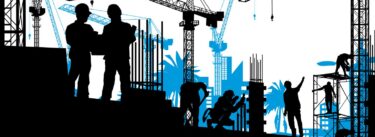Dear Gemba Coach,
I really enjoyed reading your article on the difference between standard work and procedures back in December. It really helped clarify the differences. However, I still struggle with the idea of standard work in an administrative area. Can you explain further how to implement in an office environment?
Very carefully – or you’ll drive everybody crazy. One serious lean student I know is the head of the accounting and customer service department of a large nonprofit, dealing with thousands of members. He’s been trying to implement standard work for the last couple of years, without much success (he’s not nuts; when his team resists, he doesn’t push through but tries to figure out why). One thing that has become clear from his efforts is that administrative workers are faced with an interesting set of work challenges:
They’re very far from customers – Admin does work the customer doesn’t particularly care about, such as invoicing, and when customers do call, they’re usually annoyed that some “administrative” piece of work is causing them trouble and they just want this fixed and the problem to go away, because they have many other things on their plate. As a result, it’s very hard to see value.
They deal with a large array of non-repetitive problems – Sure, admin is not rocket science, but day-by-day problem analysis shows that problems seldom come twice in the same manner, or with the same issues. As a result, it’s hard to know what to standardize and what to simply deal with as it occurs.
Procedures are rarely that set or that complete – Yes, there are entire manuals of procedures, but these are very rarely accurate or up-to-date, particularly when it comes to computer systems which make the bulk of administrative work these days. Think at how something as simple as creating a PowerPoint presentation can become bewildering and frustrating when the new version changes the default format and hides the old format in one of the hundreds of combinations of menu lists. This happens in admin daily.
What’s the Problem?
The first question to ask yourself is: Why do you want to implement standard work in administrative areas in the first place? Is it to make sure that procedures are correctly applied and avoid errors? Is it to improve customer relationships? Or is it to eliminate waste? In other words, before implementing standard work (the tool) some soul searching is in order to figure out what is the problem you’re trying to solve.
The deeper problem is that administrative teams don’t distinguish standards from procedures. They’re convinced they should all know the procedure to do this or that (and feel guilty they don’t – then again, who can?). Then they’re also convinced they should all be disciplined in following procedures better – if they could remember them all. They have no notion that standards are about (1) achieving the right outcome by (2) knowing how to do confidently and seamlessly some key tasks imbedded in the full procedure. The real issue is team ownership of its work methods.
Rather than start with standard work discussions, I’d therefore start with kaizen. Standard work, the best known way to do a task with generating the least waste, doesn’t make much sense without kaizen involving teams in owning their own work methods and improving those step by step. If your secret dream is to get the teams to be more disciplined in applying procedures to avoid mistakes, you’re bound to misinterpret the very concept of standard work and slide into old fashion Taylorism. Rather than worry about standards at this stage, we should ask ourselves:
- What is the performance we’re trying to improve?
- What is the current procedure to achieve this performance?
In administrative work, these apparently simple questions rarely are – simple. I remember coming across the Japanese term of warusa-kagen (yes, yes, more Japanese terms, bear with me a second), meaning something that is not quite correct. As Jon Miller defines it, a “condition of badness.” In production work, most work is done correctly with a few problem areas. In admin, not-quite-right can be prevalent and overwhelming: no burning issues, but lots and lots of hassles. To start with, we need to discuss with the teams what they would want to tackle first and what we’re looking for:
| Issue/Problem | Countermeasure | Best result |
| Customer satisfaction | Increase | Customer smiles |
| Quality | Increase | Right first time every time |
| Productivity | Increase | Zero waste |
| Cycle time | Decrease | One touch |
| Control/consistency | Increase | Zero variation |
Deeper Questions
Once a topic is chosen by the team, then start with the procedure. The procedure, it will turn out is rarely known (actually, only a few every know where to find it). Typically each member of the team will have their own way of doing the job, often involving asking routinely someone else how to do certain tasks (remind me again how I can change the background color of slides in PowerPoint? Ah, right, creation, last icon, tick top box, etc.) So standards start with the procedure. Then asking deeper questions:
- What’s the customer outcome in this?
- What is the sequence of who does what in that procedure?
- What are the tricky parts and what do we need to remember?
- What are the conditions to get the job done right first time?
- What do we do when one of the many items on the list is not as should?
- Who knows about this particular procedure?
Within that discussion, we’re looking for two opportunities to improve:
- Elimination of any step that clearly makes no sense to anyone, such as filing paperwork no one looks after, or, now in this enlightened computer age, documenting system libraries with info that never gets anywhere.
- Correcting specific issues or problems that make steps hard to achieve without getting it wrong.
Standard work will emerge quite naturally from observations and discussions of how the procedure is done as the team gets to agree on:
- How do we get the customer smile here?
- What can we simplify in the sequence?
- What are the key hacks we need to know to get the sequence done seamlessly?
- What are the special cases where we need to stop and talk to someone else?
Getting Started
The plan, therefore, is to set a time every week, say an hour, for the team to tackle together one procedure after the other and start listing all the key points that are needed to eliminate the most obvious waste. These key points, as they emerge, will become the basis of our future “standard work.”
Where to start? Rather than worry implementing standard work per se, ask youself: “what are the key problems the team needs to be able to solve in a wide variety of cases?” to have outstanding performance and then start with kaizen:
| Key problem | Kaizen effort | Tricks to remember |
To sum up, in administrative work “implementing standard work” seldom makes matters better. We first have to confront the deeper problems of teams grappling with the issues of: (1) how their work performance impact customers and where to look for customer smiles and (2) how the ubiquitous state of “not quite right” can be turned into specific kaizen topics, which (3) will then lead to key activities that can, indeed, then be standardized.






